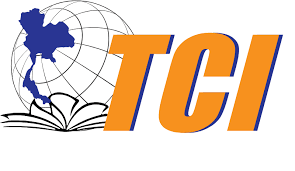Establishment of an Application for Student Activity Attendance at a Community College Using a Digital Identity Methodology
Keywords:
activity attendance application, digital Identity, OAuth 2.0Abstract
This article presents the design and development of an application for student activity attendance at a community college using a digital identity methodology. The objective of this research is to facilitate the development of an application that leverages digital identity methodologies to streamline activity attendance tracking and enhance participant monitoring and reporting processes. That can assist community college instructors by allowing students to participate in attendance at activities and control their training and education through various types of flexible courses. The proposed application is a web application that incorporates responsive web design to ensure web pages render seamlessly on mobile devices. It utilizes server-side services powered by NodeJS programming, a Firebase database for data storage, and an interface driven by the React framework. We implemented OAuth 2.0 as a standard for user authentication and access to Google services to simplify working with system security. During the OAuth 2.0 user authentication evaluation it was discovered that testing 50 experiments users to test student activity registration, with five activities per person and each user contributing the response time, produced the desired results. The distance verification process had the longest testing duration, with completion times varying significantly depending on the user devices. On the other hand, the logout process consistently showed the shortest completion times. In addition, the findings from the users' evaluations of the system's use showed that the average score, as indicated by the evaluation, was very high (X̅ =4.72, SD=0.39). In general, the majority agreed that the newly implemented approach was more practical and efficient than the previous recording approach.
References
Amazon Web Services. 2024. What is Multi-Factor Authentication (MFA)?. What is Multi-Factor Authentication (MFA) - An explanation of MFA -AWS. Available Source: https://aws.amazon.com/th/what-is/mfa/, May 24, 2024. (in Thai)
Chen, J., Hoppen, M., Böken, D., Reitz, J., Schluse, M., and Roßmann, J. 2022. Identity, Authentication and Authorization in Forestry 4.0 Using OAuth 2.0, pp. 1-6. In 2022 3rd International Informatics and Software Engineering Conference (IISEC). Ankara, Turkey.
Google. 2024a. Developer documentation for Firebase. Firebase Documentation. Available Source: https://firebase.google.com/docs, June 7, 2024.
Google. 2025. OAuth 2.0 Policies. OAuth 2.0 Policies | Authorization. Available Source: https://developers.google.com/identity/protocols/oauth2/policies, January 21, 2025.
Google. 2024b. Using OAuth 2.0 to Access Google APIs. Using OAuth 2.0 to Access Google APIs | Authorization. Available Source: https://developers.google.com/identity/protocols/oauth2, May 24, 2024.
Hardt, D. 2012. RF 6749 - The OAuth 2.0 Authorization Framework. Available Source: https://datatracker.ietf.org/doc/html/rfc6749, November 20, 2024.
Kantipudi, R., Mallavarapu, A.S.K., Rajagopal, S.M., and Kagolanu, M. 2024. A Comprehensive Analysis on using Multifactor Authentication System for Three Level Security, pp. 498-503. In 2024 2nd International Conference on Intelligent Data Communication Technologies and Internet of Things (IDCIoT). Bengaluru, India.
Karim, N.A., Khashan, O.A., Kanaker, H., Abdulraheem, W.K., Alshinwan, M. and Al-Banna, A.K. 2023. Online Banking User Authentication Methods: A Systematic Literature Review. IEEE Access 12: 741-757.
Sommerville, L. 2016. Software Engineering Tenth Edition. Pearson Education Limited, England.
Meta Platforms, Inc. 2024. React. Available Source: https://react.dev/, June 7, 2024.
Microsoft (Thailand) Co., Ltd. 2024. What is Two-Factor Authentication?. What is Two-Factor Authentication? | Microsoft Security. Available Source: https://www.microsoft.com/th-th/security/business/security-101/what-is-two-factor-authentication-2fa, June 5, 2024. (in Thai)
Office of the Higher Education Commission, Ministry of Education. 2003. Regulations of the Management of Lower-Degree Higher Education in the Community College Act B.E. 2546 (2003). Thai Government Gazette vol. 120, Part 103 A. (dated October 15, 2003). (in Thai)
OpenJS Foundation. 2024. Introduction to Node.js. Node.js – Introduction to Node.js. Available Source: https://nodejs.org/en/learn/getting-started/introduction-to-nodejs, June 7, 2024.
Polpong, J., Puengson, S., Tantisattayanon, N. and Pornpongtechavanich, P. 2024. Enhancing Password Storage Through the Integration of Cryptarithmetic Techniques and Hash Functions. ECTI Transactions on Computer and Information Technology (ECTI-CIT) 18(2): 147-157.
Puntumnunt, V. and Sompong, C. 2024. Two-factor Authentication for Web Application. Journal of Science, Engineering and Technology Loei Rajabhat University 4(1): 1-13. (in Thai)
Reynolds, J., Samarin, N., Barnes, J., Judd, T., Mason, J., Bailey, M. and Egelman, S. 2020. Empirical Measurement of Systemic 2FA Usability, pp. 127-143. In 29th USENIX Security Symposium (USENIX Security 20). USENIX Association.
Sainui, J., Jankaew, N. and U-seng. H. 2021. A prototype of seminar registration system using face authentication. Journal of Applied Information Technology 7(2): 40-50. (in Thai)
Sharif, A., Carbone, R., Sciarretta, G. and Ranise, S. 2022. Best current practices for OAuth/OIDC Native Apps: A study of their adoption in popular providers and top-ranked Android clients. Journal of Information Security and Applications 65: 103097.
Singh, J. and Chaudhary, N.K. 2022. OAuth 2.0: Architectural design augmentation for mitigation of common security vulnerabilities. Journal of Information Security and Applications 65: 103091.
Sittijuk, P. and Sanchana, W. 2024. Development and Acceptance of Time Attendance Web Application Using Identity Verification with Picture and Location of Personnel in Private Universities. Rajamangala University of Technology Srivijaya Research Journal 16(3): 689-702. (in Thai)
The Bureau of Registration Administration. 2024. The digital identity verification and authentication system of the ThaID application.
The Department of Provincial Administration's Digital ID System in the ThaID Application - The Bureau of Registration Administration. Available Source: https://www.bora.dopa.go.th/app-thaid/, May 24, 2024. (in Thai)

Downloads
Published
How to Cite
Issue
Section
License
Copyright (c) 2025 Recent Science and Technology

This work is licensed under a Creative Commons Attribution-NonCommercial-NoDerivatives 4.0 International License.
The content and information in the article published in Journal of Rajamangala University of Technology Srivijaya It is the opinion and responsibility of the author of the article. The editorial journals do not need to agree. Or share any responsibility.






